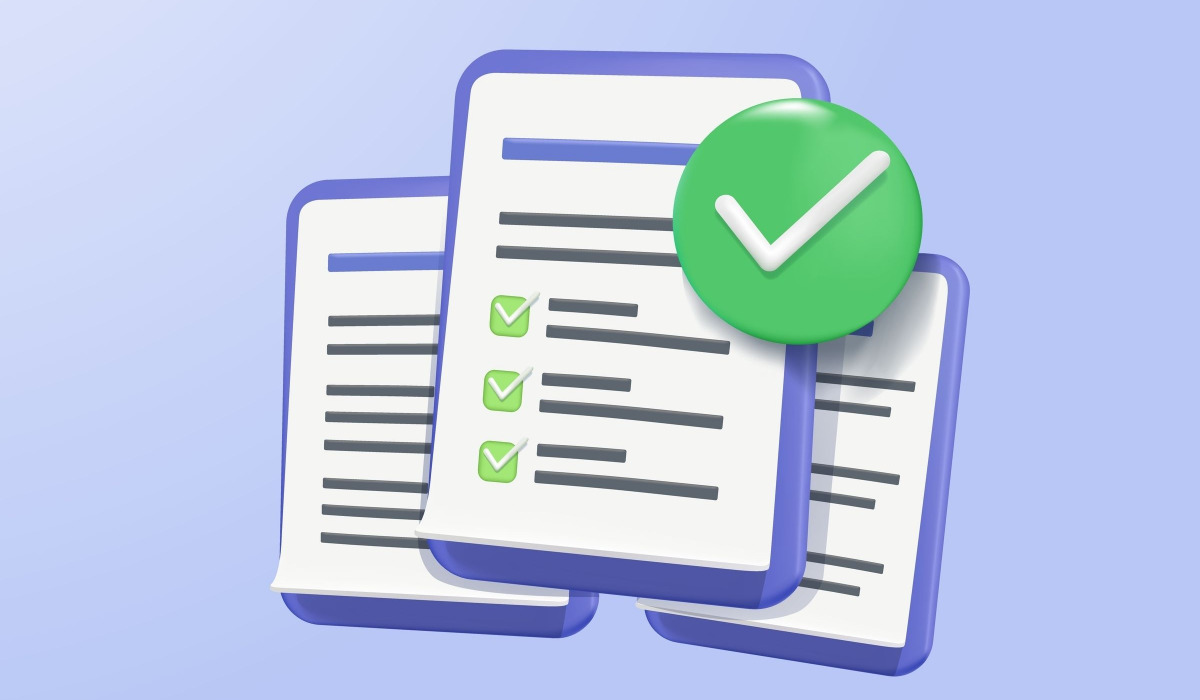There’s something about public speaking that’s both exciting…and terrifying.
On the one hand, public speaking helps you connect with a lot of new people, your audience, and other speakers. It’s a fantastic way to network, to meet a potential client, a business partner, or even a long-lasting friendship. It’s rewarding, it helps to boost your self-esteem, cement your brand, and build public image.
On the other hand, standing up in front of hundreds of people is scary. For most of us, public speaking is something we actively avoid at all costs. Standing in front of people, trying to remember what’s on the slide behind you, wondering if you’re boring the entire audience – there’s a reason public speaking is a common nightmare.
Especially for freelancers and consultants, however, the pros are simply far too important to let these cons stop you. Which raises a question: How can you leave behind the fears that cripple so many people and reap the many benefits of public speaking?
How can you finally become the confident, charismatic public speaker you’ve always wanted to be?
Table of Contents
How Public Speaking Can Help Your Business
How to Overcome the Fear of Public Speaking
10 Steps to Be a Better Public Speaker
How Public Speaking Can Help Your Business
One of the most common challenges freelancers and consultants face is instability in their workflow.
There are weeks in which you’ve got more business than you can handle, and then there are weeks where your main task is to reload your email inbox, hoping to get a new email from a lead. That’s when you realize you need to ramp up your marketing to get a more consistent pipeline of new leads and stop this emotional rollercoaster.
When you think about marketing tactics, you think about SEO, paid ads, and content marketing. But why not public speaking?
When you give a public speech, you’re immediately seen as an authority, a crucial trait for any consultancy. Not only that, you have the full attention of dozens, hundreds, or even thousands of potential leads, often for long stretches of time. You can’t say the same for most online marketing tactics.
What’s more, you get to connect with a large range of businesspeople, many of whom represent untapped growth opportunities for your business. Public speaking, it turns out, is one of the best tactics for growing a freelance or consulting business.
Sure, it won’t be a quick or easy tactic. As you will see, fear of public speaking and a lack of understanding of how to present information to an audience can stop many people from even trying it. But if you learn to overcome such fears and develop your speaking skills, you’ll grow your business in ways you’d have never expected.
How to Overcome the Fear of Public Speaking
Fear of public speaking is one of the most commonly held phobias. What if people don’t like your talk? What if they don’t like you? What if you freeze? What if you panic? What if you say something wrong?
A lot of talks these days are being hosted remotely, which does take the edge off speaking in person, but still strikes fear into the hearts of many.
It’s believed that a fear of public speaking is actually the fear of failure. Sure, the logistics of talking in front of an audience are intimidating, but really, we’re afraid of doing a bad job and of people thinking poorly of us as a result.
To overcome this, here are three tips you can use:
1. Accept the Fear
Let’s be honest with ourselves. You will feel fear. We all do. Humans are predisposed to fear of being ridiculed, and speaking in public increases your social vulnerability in an extreme way.
Your mind doesn’t like it when you’re vulnerable, so it panics.
Even if you have the most beautiful presentation, or you’re unveiling Nobel Prize-worthy research, even if you know your speech like the back of your hand, you will always feel butterflies in your stomach before a talk.
Whatever solutions you use to lower that fear—counseling, coaching, meditation, or even medication—you will always feel some fear before giving a talk. Accept it.
The key, as Franklin D. Roosevelt said, is to remember that “courage is not the absence of fear, but rather the assessment that something else is more important than fear.”
2. Practice
To give a successful talk—one where you are eloquent, engaging, and interesting—you need to be prepared. This requires you to practice a lot. There’s nothing worse than watching a speaker who’s clearly not prepared for a talk. The ideas may be fine, but the thoughts don’t flow.
That’s because the speaker focused too much on the ideas and not on the execution. The speaker forgot to practice.
Before you can practice your talk, however, you need to have it prepared weeks in advance. Take the time to define the topic, the structure, and the slides so you can then practice it for as long as you can. Practice will help you gain the confidence you need to give a wonderful talk without any hiccups.
What’s more, it will expose any problems you may have with your presentation.
You can practice your talk in front of a mirror, with your friends and family, anyone.
Set up your phone and record yourself doing the speech over and over again in the days leading up to the real thing. You’ll be able to pick up on twitches, awkward pauses when you’re going too fast or too slow, or if you rely on the slides too much.
What matters is that you practice as much as possible.
3. Get a Coach
A speaking coach can give you valuable feedback that you’d not get otherwise. While a coach is an obvious solution when you are planning on becoming a professional speaker, they can still help you when you’re just starting out.
What’s more, a coach can give you “inside” tips from the trenches that would take you a long time to discover on your own.
10 Steps to Be a Better Public Speaker
Public speaking is more of an art than a science, but there are still steps you can take to develop your skills, and your career.
Step 1: Know Your Goal
If you have ever read anything from Foundr, you know we go big on the idea of finding purpose in anything you do. The reason for that is, when you know why you want to do something, everything else becomes easier and clearer.
The fear of public speaking can be daunting, but if you have a goal that’s bigger than your fear, your fear won’t stop you from speaking.
The “ultimate goal” refers to the final result that speaking in public would bring you:
- Do you want to generate leads for your consulting business?
- Do you want to become a paid speaker and live off your gigs?
- Do you want to help the world and spread your message?
Not only will knowing your goal give you a level of clarity unlike anything else, but it will also make your pitches and your presentations much more aligned with your goals.
For example, consider what you set to gain from your public speech. Aside from the money, consider that it may be a great opportunity for networking and lead generating reasons. This is because as you generally get to know other (influential) speakers, which gives you access to business opportunities few people would get.
Get this ultimate goal defined before you even choose or agree to an event.
Step 2: Define a Set of Speaking Topics
Before you even begin to research potential speaking opportunities, you have to have a set of topics you’re interested in speaking about. Most likely than not, you already have an idea of them, you only need to have them written down.
If you’re in doubt about your speaking topics, you simply need to pick one that fits the following criteria:
- You’re passionate about or experienced at the topic at hand
- You can naturally speak about it in an engaging way
The first relates to the idea that people who give speeches know what they’re speaking about. Just as you don’t see random people giving talks at TED events, you won’t get any meaningful speaking opportunities if you can’t show some proof to the event organizer that you know the subject of your speech.
The second criteria mean you must give your speech in a way that’s entertaining for the audience.
While a speaking gig isn’t the same as stand up comedy, you always want to add a fun tone to your speech. What’s more, you need to explain things in a clear way so your audience not only learns something new, but they get intrigued about what you talk about.
If you’re an expert (or at least, you’re passionate about your speaking subject), you will know what aspects of your speech will interest your audience more than anything.
Step 3: Start Talking at Small Events
When you’re getting started, you want to start with small events. You’ll progressively develop your skills, gain confidence, and find your own unique voice.
One way is to go to Meetup.com and look for events that are about a topic you’ve selected.
Let’s say you want to speak about writing to see if you can drum up some more clients. By simply searching your topic, you can get a long list of events happening soon for which you can apply.
Meetup.com offers both in-person and digital sessions, so you have the option to search for talks being given on the other side of the globe. If there’s a talk coming up in Scotland next year and you think you’d be perfect for it, then you can contribute.
Digital talks are an opportunity to practice public speaking, network, and grow your skills on a global market.
It’s best to pick events that will be carried out in at least a month and have no announced speakers yet. Usually, event organizers develop meetings many weeks (if not months) in advance. The more time in advance the event is, the more time you’ll have to practice your speech.
A good way to find out if you might be able to give a talk at an event is to check for the event’s announcers. If it has none, or not all have been announced yet, you have a chance.
Once you’ve found at least two or three events, it’s time to pitch the event organizer.
Step 4: Pitch the Event Organizer
When making a pitch for a speaking engagement, you want to be concise and clear about your goal. Don’t beat around the bush. They know it and you know it, so why over complicate it?
On Meetup.com, you can see the event organizer’s name right at the top and whether or not the talk is being held digitally or in person.
Then, send the person a message similar to the following:
Hey,
I’m [your name].
I see you’re having your Creative Writing Exercise Workshop soon. While I’ve not had the chance to attend one of these events in the past, I’ve heard lots of great stuff about them.
Since you’ve not announced your speakers yet, I’d like to know if you’d be interested in having me give a talk about my experiences in writing [xyz].
Given your event is about creative writing, I’ve done [xyz].
What do you think? Would you be interested in having me talk at your event?
If so, let me know anything I need to know or do before it. If you want to talk to me in person, you can reach me [email or phone].
Talk to you soon,
Be sure to adapt it to your own style. Once you get a positive response, you can start working on your talk, but hold off until you get a confirmed opportunity with a defined topic.
Step 5: Develop Your Slides
While the quality of your speech matters, your slides should also be designed and structured in a way that entices your audience.
Often, amateur speakers add a bunch of data into their slides, hoping the audience will absorb the information and “get it.” Or they add a bunch of bullet points, with the hopes that the audience will read them as the talk unfolds.
These slides are awful, just like the one shown below:
That may be acceptable if you’re a professor at a university, but not if you want to master the art of public speaking.
Check TED talks and you’ll see the slides are often minimalist, but still highly connected to the topic being presented. You don’t have to spend thousands of dollars with a designer to develop your slides, at least not when you’re getting started. With a tool like Google Presentations, Microsoft PowerPoint, Apple Keynote, you can develop well-designed slides for free.
Remember:
- Don’t add a lot of text
- Don’t read from your deck
- Use a simple design
Highlight just a little bit of text or an image that’s related to the ideas spoken, but let your speech do the rest. The work isn’t on the slides themselves but on the way they complement your speech.
Step 6: Structure Your Talk Like Aristotle
Aristotle is one of history’s greatest philosophers, encompassing a wide range of topics including physics, politics, logic, ethics, and most importantly, rhetoric. Aristotle is known for developing one of the most common ways public speakers present their ideas, which consists of:
- Starting by giving your audience an idea of what they’ll learn
- Giving the talk and engaging the audience in the process
- Closing it by tying all the ideas together
This three-part structure has been called the “Aristotle technique.”
Most TED talks, like most popular presentations, start with the speaker giving a hint of their talk. They give some context, so the audience can prepare for what is about to come.
Then, they give the talk. Obviously, the speaker must continue to engage the audience throughout the entire speech, using a mix of humor, storytelling, facts, and more.
Finally, they finish by giving a quick overview of what they taught so the audience can leave with a clear idea in their heads.
Call it what you like, but your speech should respect this structure, so your audience can understand your ideas better and leave your speech having a clear idea of what they’ve learned.
Step 7: Learn to Tell Stories
Behind every successful talk, there’s a great story.
Humans have been programmed to connect with stories. Imagine our ancestors from hundreds of thousands of years standing around a fire sharing knowledge, customs, and stories from the past. That’s how humans explored spiritual narratives, theories that explained how the universe works, and recent events.
Whenever someone tells us a story, we listen. That’s in our blood. If you can tell a good story, you will engage your audience.
Once again, check TED’s most popular talks—from Sir Ken Robinson’s “Do schools kill creativity?” to Julian Treasure’s “How to speak so that people want to listen” to a favorite of many: Tony Robbins’ “Why we do what we do”—and you will see they’re all story-driven.
The knowledge they share is valuable, but as anyone who has ever been in a boring college class can attest, the ideas aren’t as important as the vehicle through which they’re told. That is, the narratives used to explain them—the stories.
Your stories don’t have to be complicated or long. A story can be as long as War and Peace or as short as a tweet, what really matters is that the elements that make a story are there.
All stories follow a basic structure:
- A story starts by introducing the characters and their context (the beginning)
- Then the characters face a challenge, leading up to the story’s climax (the middle)
- The challenge is overcome and we see how it changed the characters and their context (the end)
Your speech will likely be about one main argument—a hypothesis that you want to prove—and this will break down into different sections. In each section, try to explain the main concept through a story, and then tie them all together through the overall speech.
Let’s say that the topic of your speech was about how cold-calling clients every day can make you a better marketer. In this case, the topic is the argument (cold calling = being a better marketer).
To explain this main argument, you would separate it into three smaller pieces:
- Cold-calling every day helps you to connect with potential leads
- It helps you communicate better
- It helps you become more confident with work
The entire speech would then be a story. For example, your first job cold-calling in a dodgy telemarketing company, but then that you realized you were confident enough to get a new job through a phone interview. You then discovered that cold-calling is a way to practice better communication.
Even if your ideas are clear and useful, your stories will make them compelling and easier to digest.
Step 8: Practice Makes Perfect
Just like any form of expression, public speaking is a craft you improve as you practice it. Speaking in front of your mirror helps, but to truly get good at this you need to speak in public. At first, your speaking gigs won’t be that good.
Your stories won’t be that engaging. You may not command the attention of the room very well. That’s fine.
When you’re getting started, your passion will trump your skills. People will get that and will forget your mistakes. As you continue to speak in public, you’ll get better.
There’s no special technique for practicing. You only need to start booking more speeches, regardless of the size of the audience or the money you make (if that’s what interests you).
Step 9: Study the Greats
Practice and coaching are crucial, but another great way to improve your speaking skills is to study the great orators of the past.
You can even scan back through thousands of years of historic speeches, from Demosthenes’ “On the Crown” speech to Abraham Lincoln’s “Lyceum Address,” to Winston Churchill’s “This was their finest hour” speech. You’ll learn how history’s greatest speakers shaped our past.
You will also learn how they organized their ideas, how they presented them, and what words they used to maximize the power of their message.
Consider this studying, just as you studied arithmetic back in high school. It’s a mental exercise that will help you absorb new techniques and improve your communication skills.
Step 10: Track Your Goal
Last but not least, you can’t forget the goal you had originally defined in Step 1. You want to make sure you’re getting the results from your speaking efforts.
After you give each talk, you need to see whether it’s getting you closer to the results you desired.
For example, if you wanted to generate leads, how many leads did your speech generate? If you wanted to make money, how much did you get paid? If you want to get more people to join your cause, how many joined it?
This goes back to the organization and structure of your talk. If you wanted to get consulting clients, did you add a call-to-action at the end of your talk, like a link to your site? Did you stay in the event talking to people? Did you send any offers to your event’s attendees?
You must keep track of your results, so your speaking isn’t done in vain.
Public Speaking FAQs
Why is public speaking important?
We may live in a world where Zoom calls are more common than boardroom presentations, but public speaking skills are universally essential for founders. You must communicate concisely and effectively, whether the audience is your team, a group of customers, or a potential investor.
What does a nervous public speaker sound like?
Typically, nervous public speakers use a lot of fillers like ums or take long awkward pauses. But the most common trait of a nervous public speaker is talking too fast. If you think you're talking normally, slow it down to the point it feels uncomfortable.
What does a good public speaker sound like?
First and foremost, a good speaker gets their message across. Second, they keep their audience engaged throughout the talk. And last, they leave the audience wanting more or motivates them to take immediate action.
Say it Loud and Proud
Speaking in public is an art, no question about it. Like any art, you need to think about it as something you’ll hone over time. It will take a while to master this art. You will have to face your fears and overcome setbacks. But there’s a virtuous cycle behind this art; the more you practice it (both privately and publicly), the more confidence you will gain. The more confident you become, the easier speaking will be, and the better your skills will get.
As Leonardo da Vinci once said, “It’s easier to resist at the beginning than at the end.” Don’t let that happen to you. Practice your skills and get up on that stage. The world needs you to share your knowledge; you only need to take the first step.
Public speaking is just one of the many traits you need to build a business. Explore our free training to learn more essential founder skills.






















